 Insect Stamp of Republic of Ghana
Insect Stamp of Republic of Ghana Insect Stamp of Republic of Ghana
Insect Stamp of Republic of GhanaTo Ghana, a European mainly Portuguese is come to do slave trade such as gold or ivory since the 15th century. Ghana become a colony of British by the 19th century. Founding Fathers "Nkrumah" is becoming serious by independence movement in 1949 , merge Togo land and achieve independence in 1957. Ghana shifted to republican form of government to assume Nkrumah as a president. However, president Nkrumah lost its position by a military coup d'etat of 1966, and coup d'etat occurred successively afterwards. In 1992 a presidential election is performed, and Rawlings takes office as the president and thereafter election by plural political parties was performed, and democratization was firmly established.
Eight kinds of insect stamps and one kind of small sheets were published from Ghana in 1991. The insect of the Africa specialty is drawn ecologically.
Six kinds of insect stamps and one kind of small sheets were published in 2002. USUBAKAGEROU by which the larva is known as ant-lion appeared in the stamp for the first time.
Republic of Ghana
1991.10.25 Insect Stamp
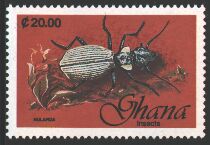 |
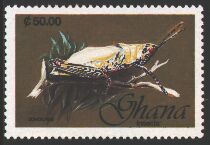 |
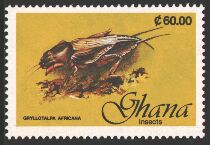 |
|---|---|---|
| Anthia Ground Beetle Anthia anthia (Harpalidae) |
Bush Locust Zonocerus zonocerus (Pygomorphidae) |
African Mole Cricket Gryllotalpa africana (Gryllotalpidae) |
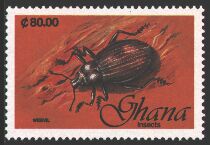 |
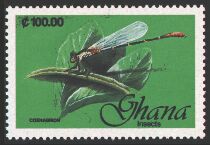 |
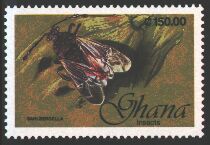 |
|---|---|---|
| Weevil Gen. et sp. Indet. (Curculionidae) |
Northern Damselfly Coenagrion coenagrion (Agrionidae) |
Plant Bug Sahlbergelia sahlbergelia (Miridae) |
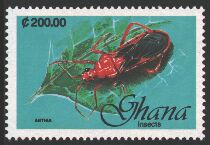 |
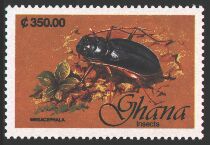 |
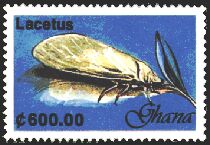 |
|---|---|---|
| Assassin Bug Gen. at sp. Indet. (Reduviidae) |
African Tiger Beetle Megacephala megacephala (Cicindelidae) |
Common Lacewing Lacetus lacetus (Chrysopidae) |
2002.8.26 Insect Stamp
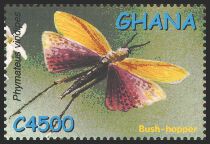 |
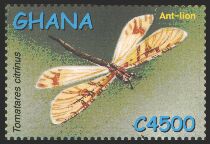 |
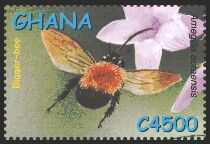 |
|---|---|---|
| Bush Locust Phymateus viridipes (Acrididae) |
Ant Lion Fly Tomatares citrinus (Myrmeleontidae) |
Digger Bee Amegilla acraensis (Anthophoridae) |
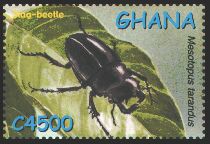 |
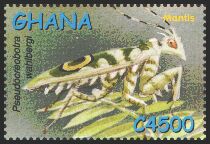 |
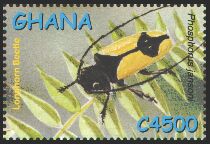 |
|---|---|---|
| Tarandus Giant Stag Beetle Mesotopus tarandus (Lucanidae) |
Flower Mantid Pseudocreobotra wahlbergi (Mantidae) |
Longhorn Beetle Phosphorus jansoni (Cerambycidae) |
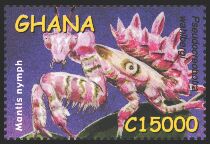 |
|---|
| Flower Mantid Pseudocreobotra wahlbergi (Mantidae) |
 NEXT
NEXT
 to Stamp
to Stamp
 to HomePage
to HomePage